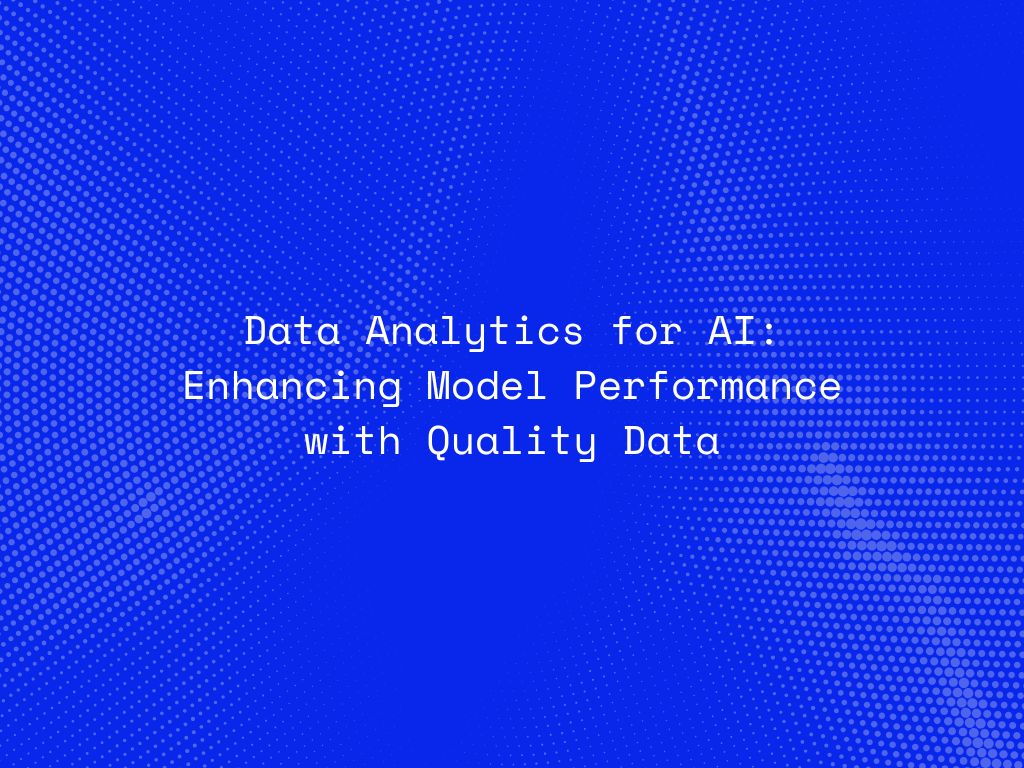Artificial Intelligence (AI) is revolutionizing industries by enabling machines to make intelligent decisions based on data. However, the accuracy and efficiency of AI models depend largely on the quality of the data they process. Poor-quality data can lead to biased predictions, inefficiencies, and increased computational costs. This is where data analytics plays a crucial role in refining, structuring, and managing data to improve AI model performance. In this article, we will explore how data analytics enhances AI, key techniques for ensuring data quality, and best practices for leveraging analytics to improve model accuracy and efficiency.
The Role of Data Analytics in AI
Data analytics serves as the foundation for AI-driven decision-making. AI models learn patterns from data, and their ability to generalize and make accurate predictions hinges on the quality, diversity, and completeness of the dataset. Effective data analytics helps in:
- Identifying and eliminating errors or inconsistencies in datasets.
- Enhancing feature selection and engineering to optimize model performance.
- Providing insights into data distribution, helping mitigate bias and improve fairness.
- Enabling real-time data processing for dynamic AI applications.
Key Techniques for Enhancing AI with Data Analytics
To ensure AI models are trained on high-quality data, organizations must adopt several data analytics strategies:
1. Data Preprocessing and Cleaning
Before an AI model can process data, it must be cleaned and structured. This involves:
- Removing duplicate, incomplete, or irrelevant data.
- Handling missing values through imputation techniques like mean substitution, regression imputation, or deep learning-based estimations.
- Normalizing and standardizing data formats to maintain consistency.
- Detecting and eliminating outliers that could skew model predictions.
2. Feature Engineering and Selection
Feature engineering is the process of transforming raw data into meaningful features that improve model accuracy. Key techniques include:
- Selecting the most relevant attributes that impact model performance.
- Reducing dimensionality using techniques like Principal Component Analysis (PCA) to improve computational efficiency.
- Creating new features through transformations, aggregations, and domain-specific knowledge.
3. Data Augmentation and Synthetic Data Generation
In cases where data is limited or imbalanced, data augmentation can help enhance training datasets. Methods include:
- Generating synthetic data using Generative Adversarial Networks (GANs) or Variational Autoencoders (VAEs).
- Augmenting data with transformations such as rotations, scaling, and cropping in image-based AI models.
- Using oversampling and undersampling techniques to balance class distributions in classification problems.
4. Real-Time Data Processing and Stream Analytics
AI models that require real-time decision-making rely on efficient data processing pipelines. Organizations can achieve this by:
- Implementing streaming analytics platforms like Apache Kafka and Spark Streaming for real-time data processing.
- Utilizing edge computing to reduce latency and improve response times.
- Deploying AI models that adapt dynamically to new data, ensuring up-to-date predictions and insights.

Best Practices for Data Analytics in AI
To maximize AI model performance, organizations should follow these best practices:
- Implement Automated Data Pipelines: Automate data collection, cleaning, and transformation processes to minimize errors and human intervention.
- Leverage Cloud-Based Data Storage and Processing: Use scalable cloud solutions to handle large datasets efficiently while ensuring security and compliance.
- Adopt MLOps and DataOps Strategies: Streamline collaboration between data engineers, AI researchers, and DevOps teams to improve AI deployment and monitoring.
- Monitor Data Quality Continuously: Utilize data governance frameworks to detect anomalies, data drift, and inconsistencies in real time.
- Ensure Data Privacy and Compliance: Follow industry regulations like GDPR and CCPA to maintain data integrity and protect user privacy.
The Future of Data Analytics in AI
As AI models become more sophisticated, data analytics will continue to play a critical role in optimizing their performance. Advancements in automated machine learning (AutoML), explainable AI (XAI), and federated learning will further enhance data-driven decision-making. Organizations that invest in cutting-edge data analytics techniques will gain a competitive edge by improving AI reliability, fairness, and scalability.
Conclusion
High-quality data is the backbone of effective AI models. By implementing robust data analytics strategies, businesses can improve model accuracy, reduce biases, and enhance real-time decision-making capabilities. As AI continues to evolve, the integration of advanced data analytics methodologies will be essential for achieving better performance and unlocking new AI-driven innovations.




